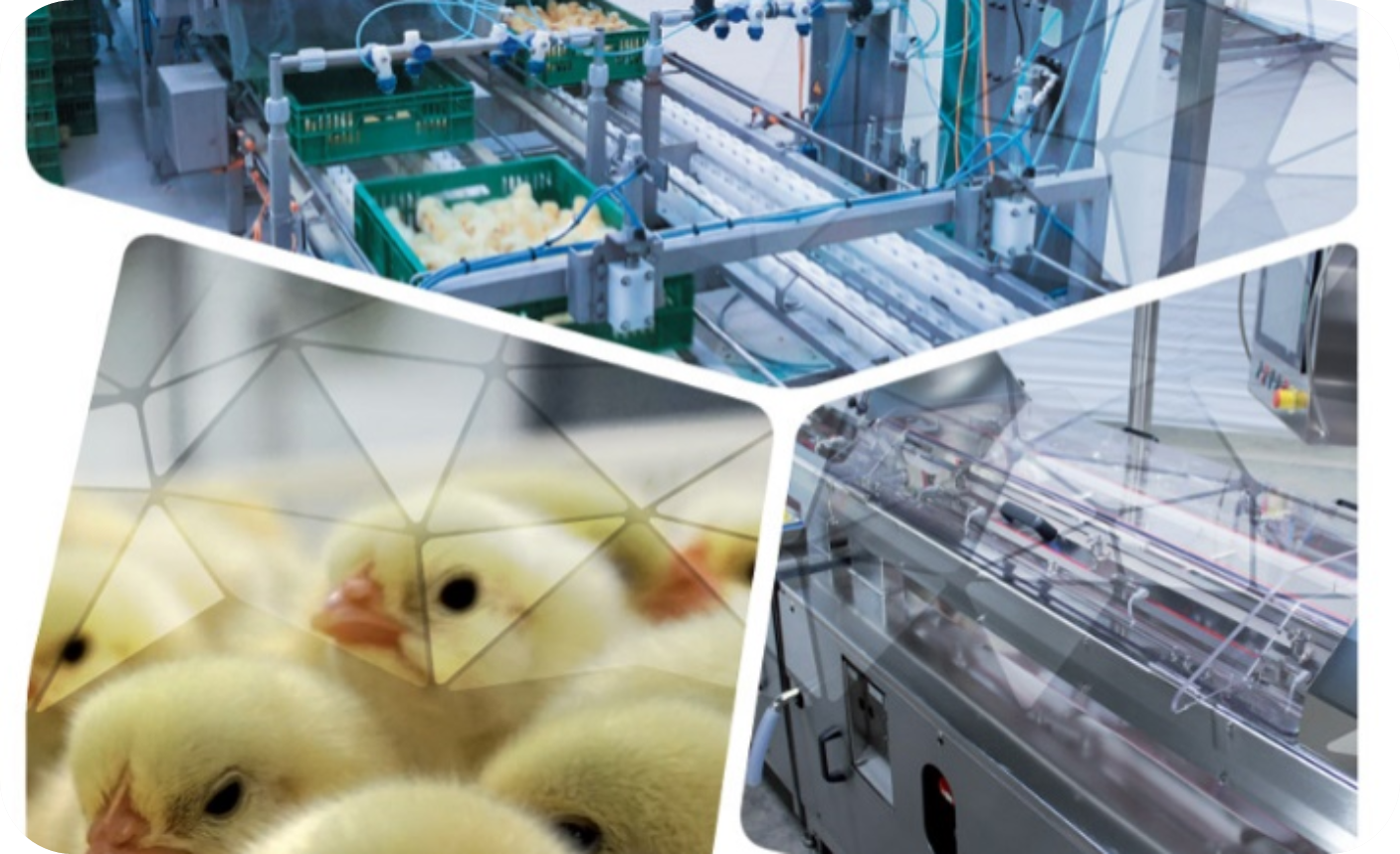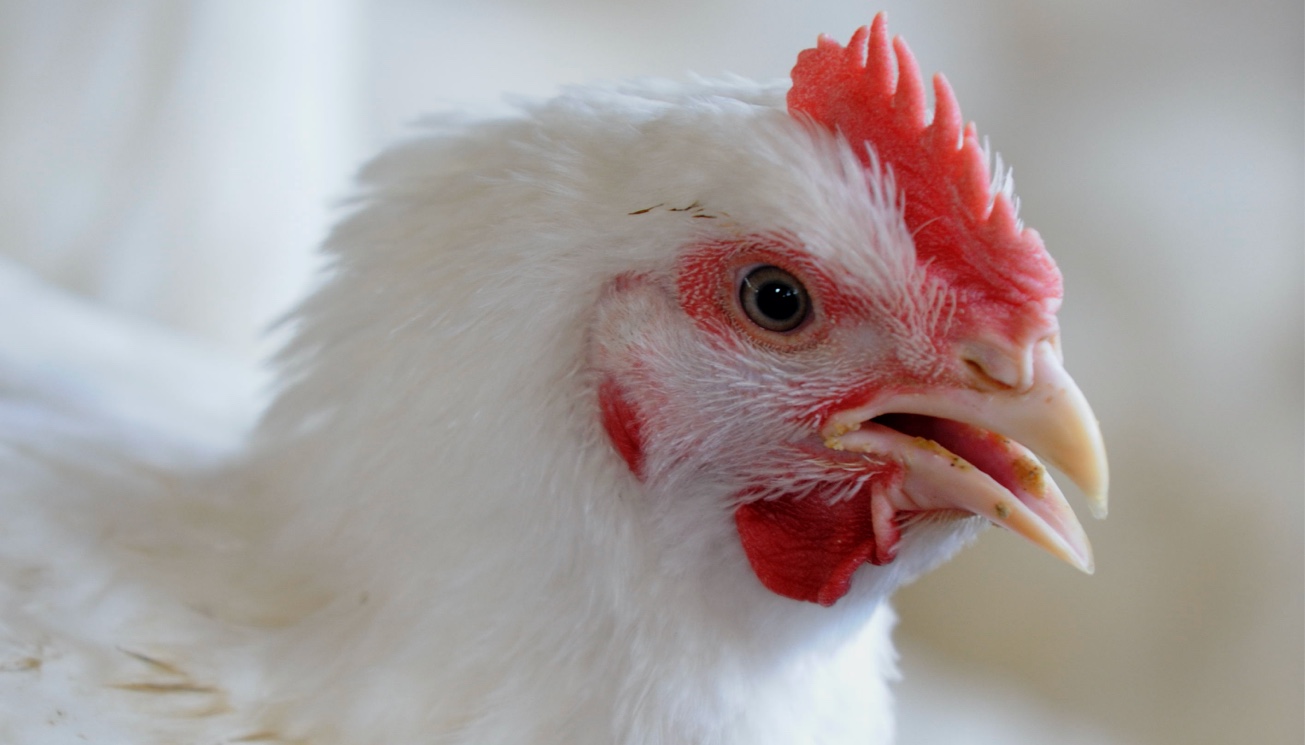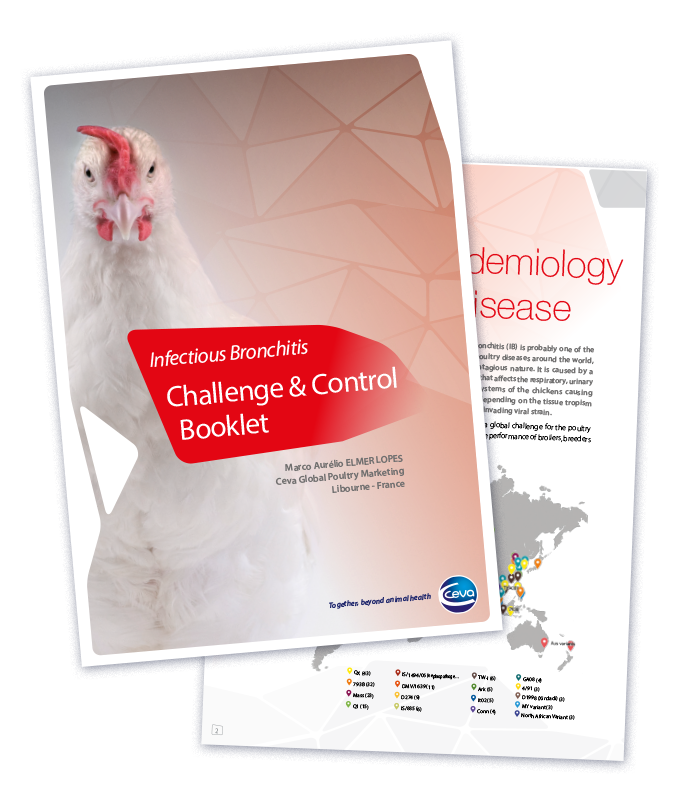For the proper control of infectious bronchitis, a critical issue is the high mutation rate and recombination ability of the IB virus (IBV). This is why there is no one single IB virus, but many IB viruses. Continuous efforts to characterize field isolates of infectious bronchitis virus (IBV) strains emerging from broiler, layer or breeder operations in different countries enable epidemiologists to draw epidemiological maps on the geographical distribution of the numerous IBV strains present in the world.
The reason for the virus’ ability to change very rapidly is the fact that IBV is an RNA virus. The changes occur in the gene of the glycoprotein S. The mutations will allow adaptation in the environment, and in some cases escape from the immune system.
Legnardi et al. (2020) describe that Spike (S) protein determines the typical crown-like aspect of coronaviruses, observable at electron microscopy (Wickramasinghe et al, 2014). After translation, the protein is cleaved sub-units S1 and S2.
The S1 is considered the most important, as it contains domains potentially involved in host receptor binding and is therefore considered the main determinant of host and tissue tropism.
This way, as in the S1 are located important epitopes, including neutralizing ones, a higher selective pressure on the protein surface will lead to a higher heterogeneity of IBV, and the biological functions over time.
Infectious Bronchitis Identification
For the control of IB, the first point to be observed is correct diagnosis. A tentative diagnosis can be made on the basis of history, clinical signs and lesions.
This initial diagnosis is confirmed by identification of the agent or via serological tests. If possible, the diagnosis should identify the virus’ serotype or genotype, in light of the extremely high rate of antigenic variation among ibv strains and the different serotype-specific vaccines (Cavanagh & gelb Jr., 2008).
Samples for IBV identification should be collected as soon as possible after the appearance of clinical signs, immediately frozen, and transported cooled. The cooling regimen should be maintained from the moment of collection right up to delivery to the lab.
As noted above, the global spread of the IB virus makes its control exceptionally difficult due to multiple and incessantly emerging serotypes and variants which make cross protection impossible (Cavanagh, 2007).
Infectious Bronchitis secondary infections
The measures devised to prevent IB outbreaks focus on specific and nonspecific control of the disease. Specific measures include flock vaccination, while nonspecific measures are based on the relevant technological norms. Biosecurity management, husbandry and control procedures should comply with the rules commonly accepted for biosecurity in the poultry industry. The sections of the farm allocated to growing birds and birds in the production stage must be sufficiently separated, with the different age groups housed separately. The control of IB in multi-age poultry flocks is very difficult. The production system should strictly apply the “all-in, all-out” principle for depopulation of premises. The cleaning, washing and disinfection of premises, equipment and transport vehicles should follow a specific biosecurity order, as should the removal and management of deep litter.
What does a proper vaccination program look like ?
Facing these IBV constant changes and the need to protect susceptible poultry populations, it would be ideal to have homologous vaccines to induce a strong protection against the circulating virus. However, most of these viruses disappear and it is a very challenging task and virtually impossible to develop an IBV vaccine against each one of them. Developing and licensing a vaccine is a time consuming process and an expensive operation, which may be lost if the virus is no longer present in the field.
However, it is possible to combine different IB viruses with different antigenic characteristics to obtain a synergistic effect and therefore broaden the spectrum of protection. In fact, it has already been demonstrated that combining antigenically different strains, such as those from the 793B group with a Mass type strain, acts synergistically thus increasing the protection spectrum of the two single vaccines if applied separately.
Lastly, accurate hatchery vaccine application using advanced spray equipment is of paramount importance for successful immunization of day-old chicks, batch after batch.

What are Ceva’s IB solutions?
Ceva Animal Health developed several live variant IB vaccines to address many different epidemiological situations. As a result, each of them is positioned in its relevant geographical area(s):
- CevacⓇ IBirdⓇ is a recently licensed IBV vaccine which contains the attenuated 1/96 IBV strain, classified within the 793B genetic group. Applied together with a live Mass-type vaccine, CevacⓇ IBirdⓇ provides a strong protection against Mass, 793B, QX, Q1, variant-2 (IS/1494), Italy-02, IS/885, D1456, Tunisian, Taiwanese and Malaysian IBV strains, including a reduction of the field virus shedding
- CevacⓇ IBrasⓇ is a recently licensed IBV vaccine which contains the attenuated BR (Brazilian variant) IBV strain. CevacⓇ IBrasⓇ, which can be applied together with a live Mass-type vaccine, provides a strong protection against BR, Mass and 793B IBV strains, including a reduction of the field virus shedding.
- CevacⓇ IBronTM is a recently licensed IBV vaccine which contains the attenuated GA08 (US variant Georgia 08) IBV strain. CevacⓇ IBronTM, which can be applied together with a live Mass-type vaccine, provides a strong protection against GA08, Mass, GA13, DMV/1639/11, and Ark IBV strains, including a reduction of the field virus shedding.

Through numerous laboratory and field trials, the safety and the efficacy of these vaccines, in combination with a Mass type live vaccine were demonstrated. Proper spray application protocols using DesvacⓇ ILS (In-line sprayer), and well defined post-vaccination monitoring procedures, such as those defined by the Ceva C.H.I.C.K. program, help to achieve a high vaccination rate and a proper quality of application - increasing flock protection against IB.



